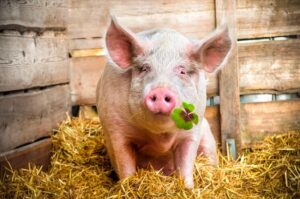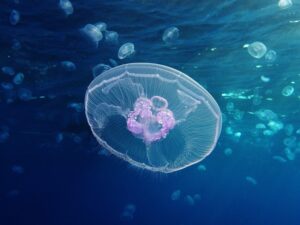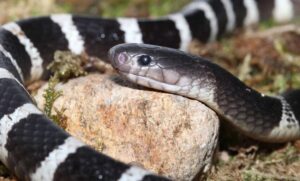Bite force is the amount of force exerted when teeth and jaws are brought together to bite and chew food. It’s measured in pounds per square inch (PSI) and represents the force an animal can apply to its prey. If you want to learn more about the Strongest Bite Force Animals, join KnowAllAnimals to explore the details in this article.
1. Top 10 Strongest Bite Force Animals – Number 1 Will Shock You
Today, Know All Animals shares a list of the 10 animals with the strongest bite force in the world (for animals that exist today). The animal in the number one spot has a bite force 117 times stronger than a human—which one is it? Let’s find out!
Top 10: Hyena – 1000 PSI
- Kingdom: Animalia
- Phylum: Chordata
- Class: Mammalia
- Order: Carnivora
- Suborder: Feliformia
- Superfamily: Herpestoidea
- Family: Hyaenidae Gray, 1821
Interestingly, although they look like a member of the dog family, hyenas are more closely related to the cat family—and they are actually not a member of either family. They are so unique that they have a family all their own—the Hyaenidae family.
Hyenas live in sub-Saharan Africa and parts of Asia, and have a surprisingly strong bite force for their size.
Their estimated bite force of 1,100 PSI is designed to allow them to bite through the bone marrow of their prey. Their teeth and digestive system have evolved to chew and digest bones.
Hyenas have a stronger bite force than wolves and domestic dogs (the strongest of which is about 700 PSI). To compare them with members of the cat family, hyenas have a stronger bite force than most lions—whose bite force is about 650 PSI, ranging up to 1000 PSI.
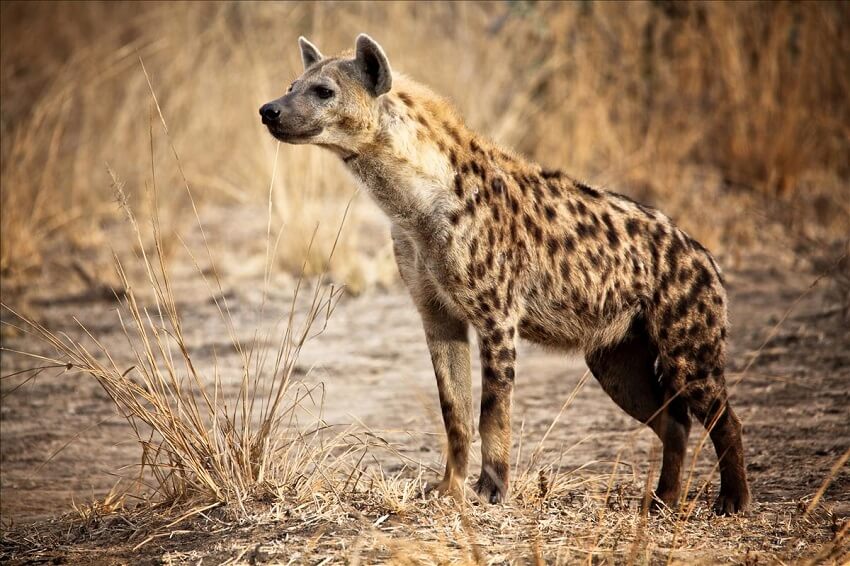
Top 9: Grizzly Bear – 900 to 1,200 PSI
- Kingdom: Animalia
- Phylum: Chordata
- Class: Mammalia
- Order: Carnivora
- Suborder: Caniformia
- Family: Ursidae
- Subfamily: Ursinae
- Genus: Ursus
- Species: U. arctos
- Subspecies: U. a. horribilis
Grizzly bears live in North America. They can weigh up to 317 kg (700 lbs), and their bite force is between 900 and 1,200 PSI. Unlike polar bears, grizzlies are not completely carnivorous.
Omnivores like grizzlies need to consume a diet that also contains plants. They like to eat berries, roots, and grass, as well as fish. In fact, grizzlies are said to be almost 85% vegetarian. Grizzlies also eat deer and moose when they can catch them, although this prey is more difficult to hunt.
When hunting, they use their strong bite, razor-sharp claws, and large body size to hold down larger prey. Because they are not as quick when hunting as other animals, grizzlies often hunt sick or injured animals.
Before hibernating for the winter, grizzlies need to eat enough food to help them survive the entire cold season. They can eat up to 40 kg (88 lbs) of food per day in the time before hibernation.
Although their bite force is weaker than that of their polar bear relatives, it is still strong enough to crush a bowling ball without much effort.
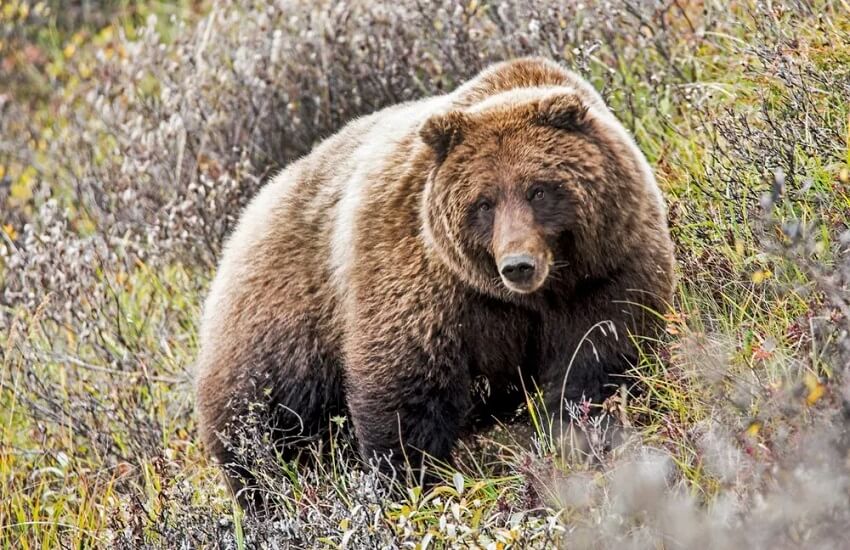
Top 8: Polar Bear – 1,200 PSI
- Kingdom: Animalia
- Phylum: Chordata
- Class: Mammalia
- Order: Carnivora
- Suborder: Caniformia
- Family: Ursidae
- Subfamily: Ursinae
- Genus: Ursus
- Species: U. maritimus
Polar bears live in the Arctic Circle, where they fight for survival in one of the harshest environments on Earth. They are the top predator in the Arctic marine ecosystem, primarily hunting seals.
Their bite force is over 1,200 PSI, making them the strongest in the bear family. This may be partly due to the fact that they sometimes go without food for 3 or 4 months and need to store food during times when food is plentiful in the Arctic.
To stay warm in the extreme cold of the Arctic, polar bears need to consume and digest a large amount of fat. Their stomachs are extremely efficient at extracting the necessary nutrients (mainly fat and protein) to survive in such a frigid environment.
Due to climate change, the polar bear’s hunting habitat is becoming more and more difficult for them to access.
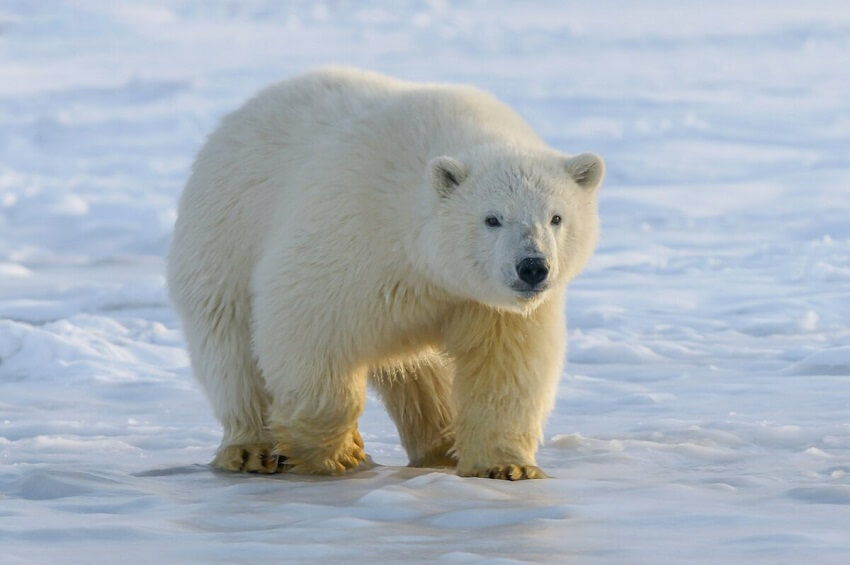
Top 7: Gorilla – 1,300 PSI
- Kingdom: Animalia
- Phylum: Chordata
- Class: Mammalia
- Order: Primates
- Suborder: Haplorhini
- Infraorder: Simiiformes
- Family: Hominidae
- Subfamily: Homininae
- Tribe: Gorillini
- Genus: Gorilla I. Geoffroy, 1852
Despite their powerful bite, gorillas are primarily herbivores. Their habitat is in the tropical forests of equatorial Africa, and they mostly live on the ground. They use their strong bite to peel tree bark to find ants and larvae.
Interestingly, gorillas don’t need a lot of protein in their diet because their digestive system produces protein from the bacteria that live inside them. Although they are mostly vegetarian, gorillas can grow up to 200 kg (440 lbs) and can be as tall as an adult human.
Unfortunately, the gorilla population is in decline due to climate change and industrialization. Their habitat is often encroached upon by expanding cities. According to the most recent statistics, there are only 1,063 mountain gorillas left in the world, and they are considered an endangered species by the World Wildlife Fund.
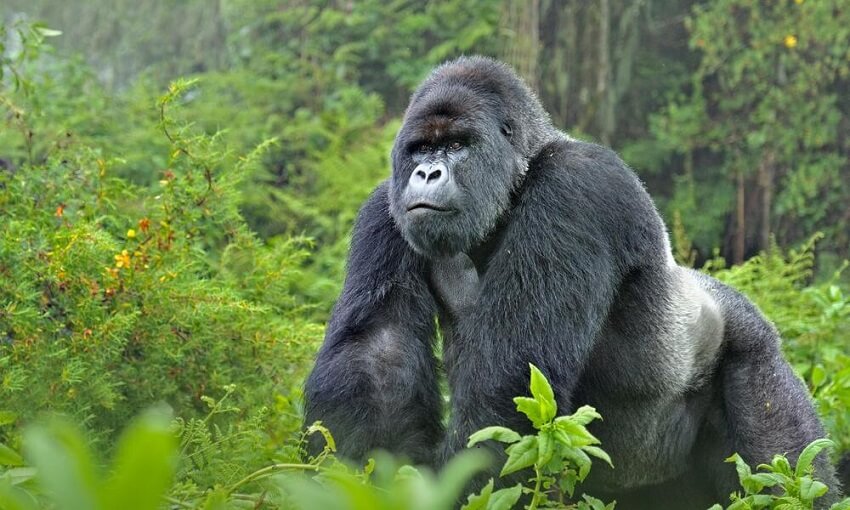
Top 6: Jaguar – 1,500 PSI
- Kingdom: Animalia
- Phylum: Chordata
- Class: Mammalia
- Order: Carnivora
- Suborder: Feliformia
- Family: Felidae
- Subfamily: Pantherinae
- Genus: Panthera
- Species: P. onca
Jaguars live in Central and South America, as well as in the Southwestern U.S. They are large cats that can grow up to 1.8 meters (6 feet) long and weigh nearly 100 kg (220 lbs). They are extremely fast and can reach an incredible speed of almost 130 km/h (80 mph).
With a bite force of up to 1,500 PSI combined with that blinding speed, a jaguar can hunt animals up to four times its size. Their name, “Jaguar,” comes from the indigenous word “Yaguar,” which means “he who kills with one leap.”
The jaguar’s powerful bite allows it to bite through a turtle’s hard shell, a crocodile’s “armored skin,” and crush the skull of any animal it can catch.
They are opportunistic carnivores, eating a wide variety of animals. Jaguars will eat snakes, lizards, large and small mammals, and even fish.
Like many other animals, deforestation and climate change threaten the territory and population of jaguars.
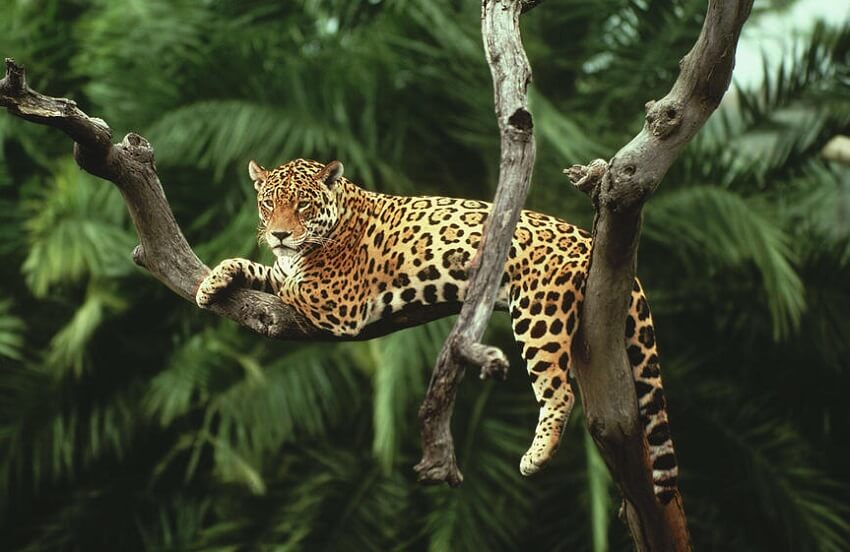
Top 5: Hippopotamus – 1,800 PSI
- Kingdom: Animalia
- Phylum: Chordata
- Class: Mammalia
- Order: Artiodactyla
- Suborder: Whippomorpha
- Family: Hippopotamidae
- Genus: Hippopotamus
- Species: H. amphibius
The hippopotamus ranks fifth on the list of animals with the strongest bite force in the world. They are the third-largest living mammal on Earth and are semi-aquatic, typically living in sub-Saharan Africa. The word “hippopotamus” can be loosely translated to “river horse” in Greek.
Despite their powerful bite, hippos are herbivores. Their bite has evolved to help them drive off top predators and fight with other hippos for status in the herd.
Although they are mainly herbivores, hippos are considered dangerous to humans and can be quite aggressive. With a weight of up to 3.6 tons, hippos can move relatively fast for their size. They can reach speeds of up to 50 km/h (31 mph) and are said to be very difficult to tame or train.
Like many other animals on this list, hippos are facing the risk of extinction due to shrinking habitats, with their population estimated by the World Wildlife Fund to be only about 110,000.
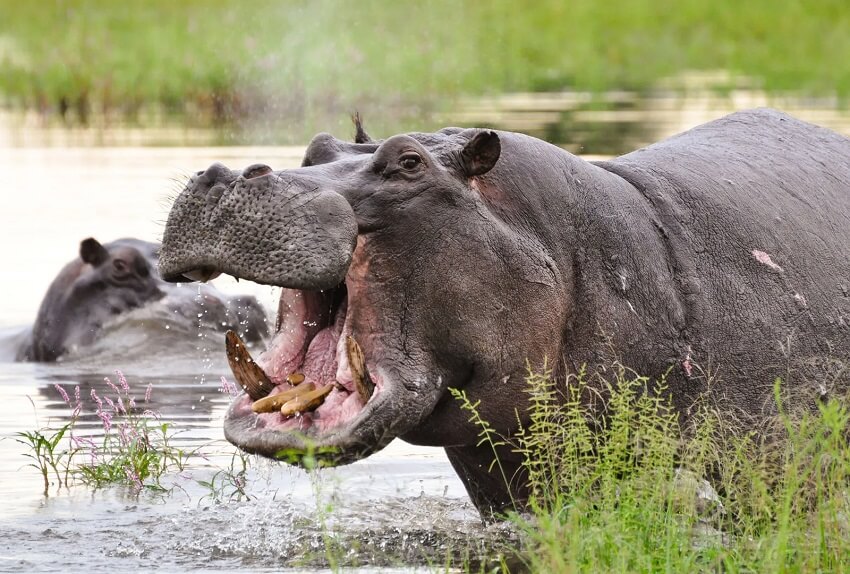
Top 4: American Alligator – 2,000 to 3,700 PSI
- Kingdom: Animalia
- Phylum: Chordata
- Class: Reptilia
- Clade: Archosauria
- Order: Crocodilia
- Superfamily: Alligatoroidea
- Family: Alligatoridae
- Subfamily: Alligatorinae
- Genus: Alligator
- Species: A. mississippiensis
With a bite force of over 2,000 PSI, the American Alligator (a short-snouted crocodile) is the next animal on this list. They live in some parts of the U.S., Mexico, and China.
As an opportunistic predator, the American Alligator will patiently wait for a chance to deliver a deadly attack to its prey. From snakes, fish, and turtles to mammals and amphibians, and even insects, they are not picky eaters.
They are often called “living fossils” and have changed very little in 100 million years.
Alligators typically only live in freshwater areas. Although they have a special gland on their tongue to excrete salt from their bodies, this mechanism is not as efficient as that of the Nile crocodile.
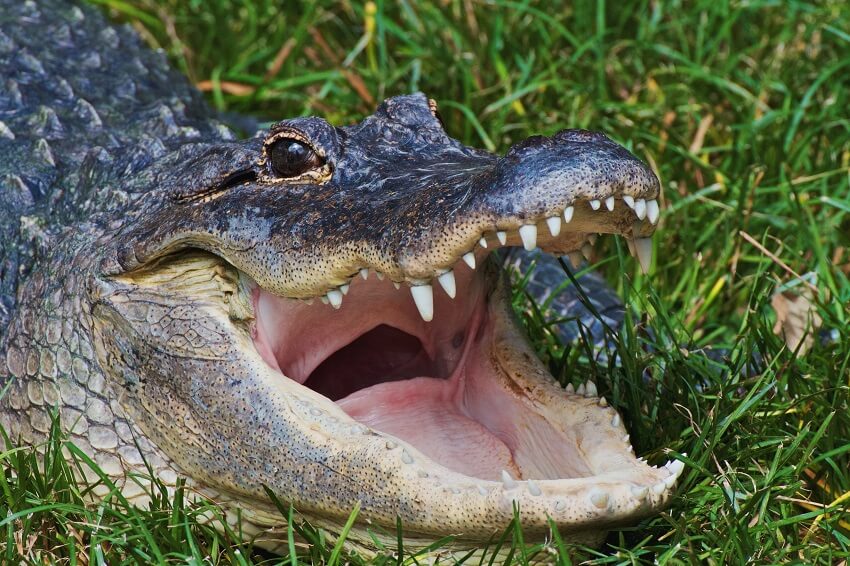
Top 3: Great White Shark – 4,000 PSI
- Kingdom: Animalia
- Phylum: Chordata
- Class: Chondrichthyes
- Subclass: Elasmobranchii
- Division: Selachii
- Order: Lamniformes
- Family: Lamnidae
- Genus: Carcharodon A. Smith, 1838
- Species: C. carcharias
The Great White Shark uses an estimated bite force of 4,000 PSI to hunt marine mammals like seals and sea lions. As juveniles, great white sharks often hunt smaller prey like fish.
This carnivorous species is found in coastal waters in major oceans around the world. Although many great white sharks do not survive past their infancy, they can live up to 70 years if they do survive. They can grow up to 6 meters (20 feet) long.
Despite having nearly 300 teeth, sharks do not chew their food. They use their ferocious bite to tear their prey into manageable pieces, then swallow each piece of meat whole.
The World Wildlife Fund lists the great white shark as a vulnerable species. This is due to both climate change and many years of being hunted for their fins and teeth and for sport.
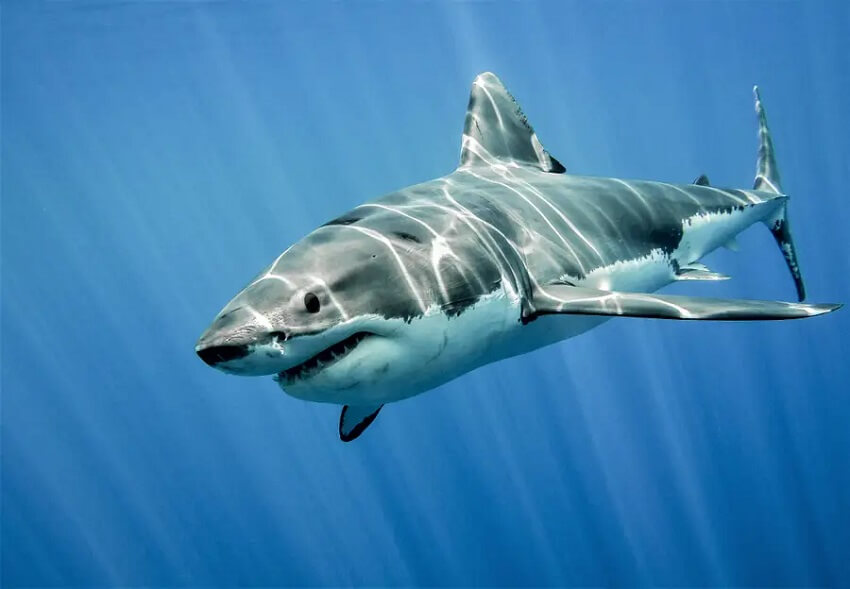
Top 2: Nile Crocodile – 5,000 PSI
- Kingdom: Animalia
- Phylum: Chordata
- Class: Reptilia
- Clade: Archosauria
- Order: Crocodilia
- Superfamily: Crocodyloidea
- Family: Crocodylidae
- Genus: Crocodylus
- Species: C. niloticus
The Nile Crocodile has a bite force of 3,700 to 5,000 PSI. Although Nile crocodiles are smaller than some other crocodile species, they have the strongest bite force of all reptiles. Like other crocodiles, the Nile crocodile can live for up to 70 years.
Nile crocodiles are native to sub-Saharan Africa and primarily live in freshwater environments, although they can survive in salt and brackish water conditions. Although they are typically smaller in size than saltwater crocodiles, the largest Nile crocodile ever recorded weighed over 1 ton.
The Nile crocodile has a stronger bite force than its larger relatives, which is why it has been ranked separately on this list of the 10 animals with the strongest bite force in the world.
Nile crocodiles can live in fresh, brackish, and saltwater thanks to a special gland on their tongue that can excrete salt from their bodies.
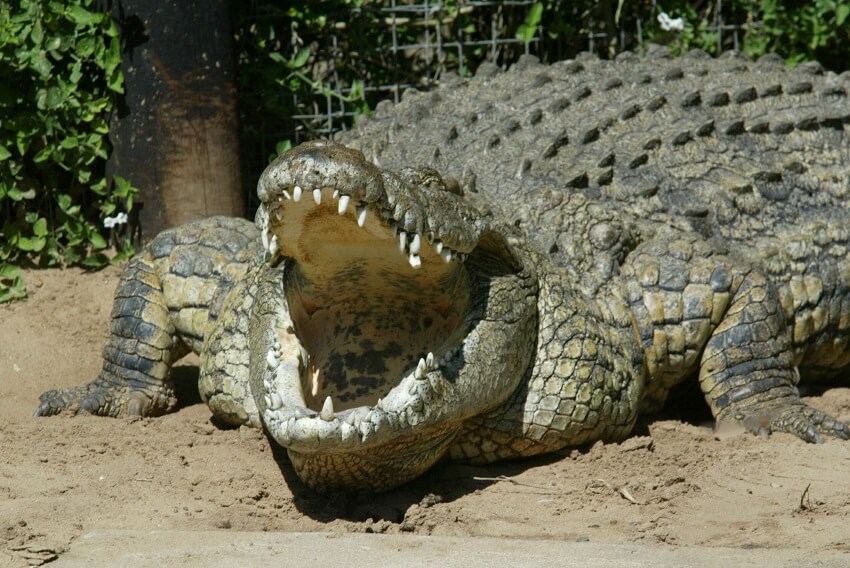
Top 1: Killer Whale – 19,000 PSI – 117 times stronger than a human bite
- Kingdom: Animalia
- Phylum: Chordata
- Class: Mammalia
- Order: Artiodactyla
- Suborder: Whippomorpha
- Infraorder: Cetacea
- Family: Delphinidae
- Genus: Orcinus
- Species: O. orca
The Killer Whale is the reason why the Nile crocodile and saltwater crocodile are combined on this list. Their “undefeated” bite force is considered to be far superior to all other species on this list of the strongest bites.
Killer whales are pack hunters, and they hunt and consume a wide variety of marine life, including fish, squid, dolphins, seals, sea lions, and other whales. As apex predators, killer whales are at the top of the food chain in their ecosystem and have no natural enemies.
Each day, they need to eat about 4% of their total body weight. The females of this species can weigh up to 4 tons and live up to 50 years. Meanwhile, the largest adult males ever found in the wild reached a length of more than 10 meters (33 feet) and a weight of nearly 10 tons.
Although called a killer whale, the killer whale is not a member of the whale family—they are the largest member of the Delphinidae family (oceanic dolphins) and live in almost every ocean on Earth. Killer whales are a protected species and are at risk of extinction in some parts of the world due to climate change and their decreasing access to a sufficient food source.
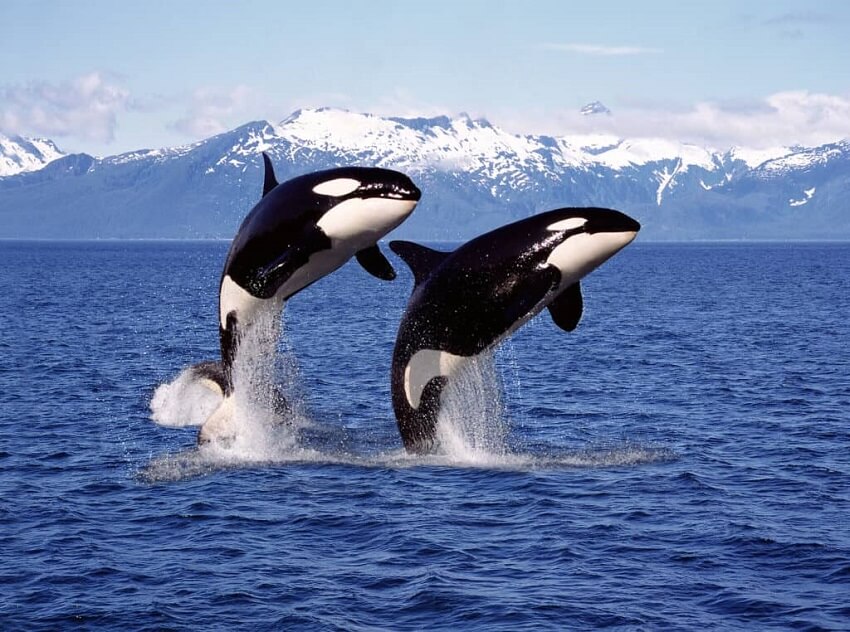
2. Conclusion
This concludes our list of the Strongest Bite Force Animals in the world today that Know All Animals has just shared with you. We hope this article has helped you gain more knowledge about these animals. We are very happy that you have read our article.

